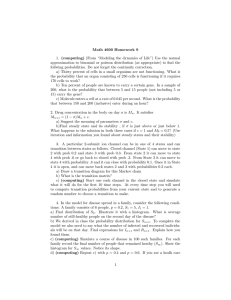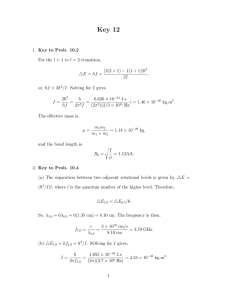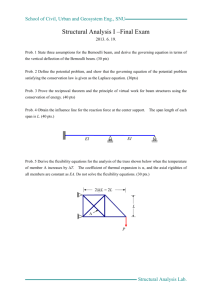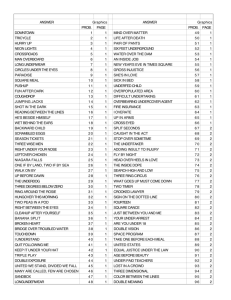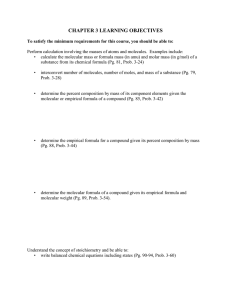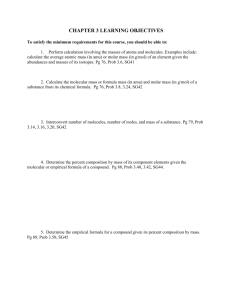Esame di Microeconomia avanzata (16 aprile 2004)
advertisement
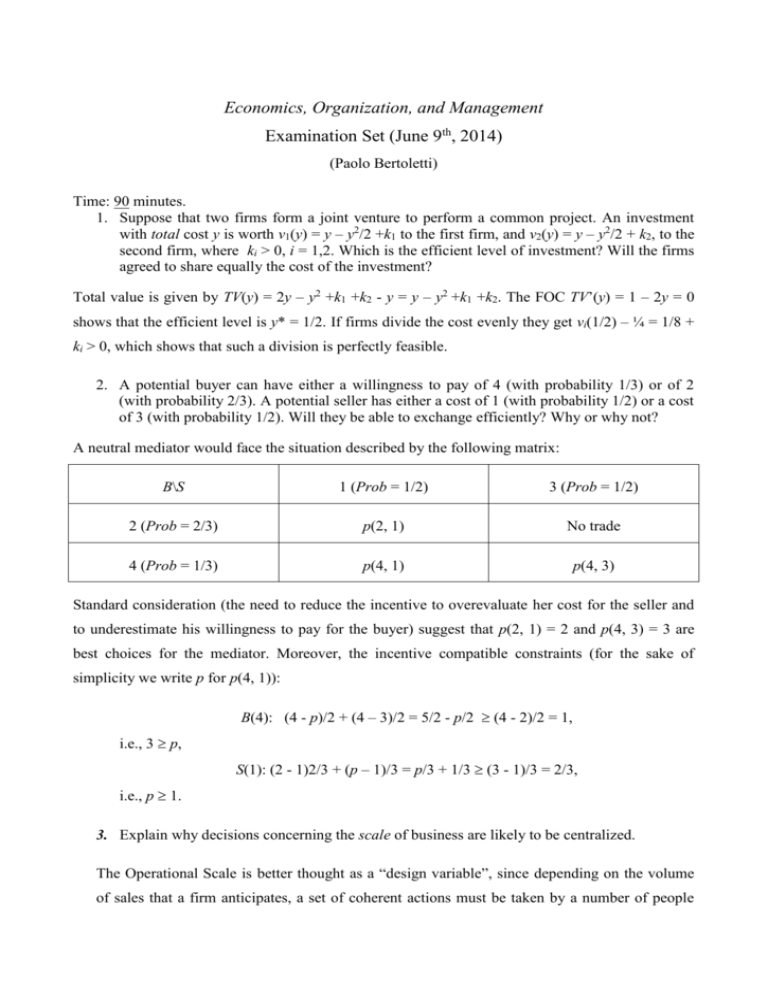
Economics, Organization, and Management Examination Set (June 9th, 2014) (Paolo Bertoletti) Time: 90 minutes. 1. Suppose that two firms form a joint venture to perform a common project. An investment with total cost y is worth v1(y) = y – y2/2 +k1 to the first firm, and v2(y) = y – y2/2 + k2, to the second firm, where ki > 0, i = 1,2. Which is the efficient level of investment? Will the firms agreed to share equally the cost of the investment? Total value is given by TV(y) = 2y – y2 +k1 +k2 - y = y – y2 +k1 +k2. The FOC TV’(y) = 1 – 2y = 0 shows that the efficient level is y* = 1/2. If firms divide the cost evenly they get vi(1/2) – ¼ = 1/8 + ki > 0, which shows that such a division is perfectly feasible. 2. A potential buyer can have either a willingness to pay of 4 (with probability 1/3) or of 2 (with probability 2/3). A potential seller has either a cost of 1 (with probability 1/2) or a cost of 3 (with probability 1/2). Will they be able to exchange efficiently? Why or why not? A neutral mediator would face the situation described by the following matrix: B\S 1 (Prob = 1/2) 3 (Prob = 1/2) 2 (Prob = 2/3) p(2, 1) No trade 4 (Prob = 1/3) p(4, 1) p(4, 3) Standard consideration (the need to reduce the incentive to overevaluate her cost for the seller and to underestimate his willingness to pay for the buyer) suggest that p(2, 1) = 2 and p(4, 3) = 3 are best choices for the mediator. Moreover, the incentive compatible constraints (for the sake of simplicity we write p for p(4, 1)): B(4): (4 - p)/2 + (4 – 3)/2 = 5/2 - p/2 (4 - 2)/2 = 1, i.e., 3 p, S(1): (2 - 1)2/3 + (p – 1)/3 = p/3 + 1/3 (3 - 1)/3 = 2/3, i.e., p 1. 3. Explain why decisions concerning the scale of business are likely to be centralized. The Operational Scale is better thought as a “design variable”, since depending on the volume of sales that a firm anticipates, a set of coherent actions must be taken by a number of people who need a shared vision. These aspects work against the use of decentralised means of coordination, and in particular the use of prices, and favor direct communication and systematic, centralized control systems.





